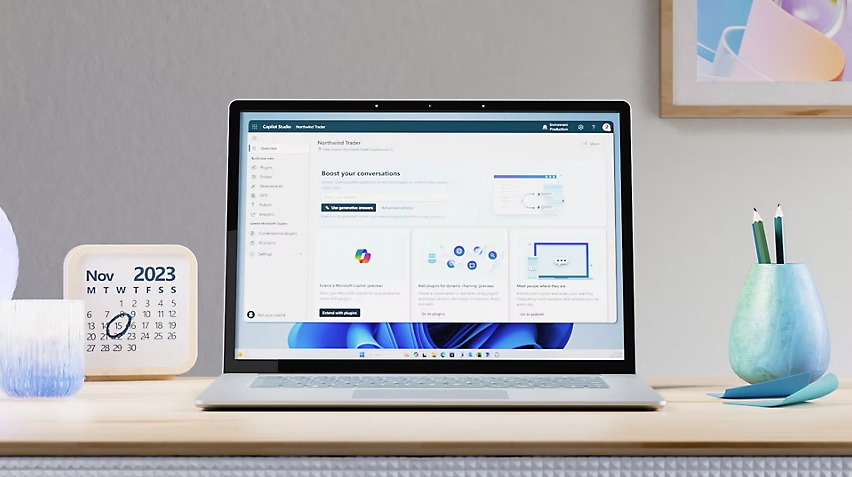The first article in this series on Power Apps and Power Platform planning focused on the key issues to address at the start of your organisation’s Power Apps/Power Platform journey – Power Apps and Power Platform: Know Your Starting Point.
This post covers two closely related issues – prioritising projects and building the business case.
Why Prioritise?
Used effectively, Power Apps and Power Platform present opportunities for streamlining and automating processes and systems across a broad range of value-chain activities within your organisation – Finance, Operations, Supply Chain Integration, Customer Engagement, Sales & Marketing, HR, Workforce Collaboration, and others. Consequently, there may be competing demands for Power Apps developments coming from different parts of the organisation.
To avoid a proliferation of uncoordinated initiatives, a well-structured project prioritisation process and agreed governance structure should be established.
Project prioritisation is the foundation for building a strong portfolio of successful Power Apps/ Power Platform projects, strategically aligning projects and resource allocation decisions while delivering more successful outcomes.
A well-structured process for prioritising projects will:
- Ensure that your Power Apps/Power Platform projects are fully aligned with and supportive of agreed business goals and objectives.
- Clearly identify those projects that add value and those that don’t.
- Create a strong portfolio of projects balanced against your organisation’s capability and capacity to deliver.
- Ensure focus on business benefits and ROI.
- Help to win executive sponsorship and approval.
- Identify and eliminate waste.
- Support resource allocation and efficient use of resources.
- Increase project success rates and deliver high ROI – projects that are fully aligned with strategy are much more likely to succeed.
- Improve the quality of project requests.
- Eliminate obsolete projects.
- Enhance project team commitment.
How to Prioritise
Organisations can use a wide range of methods for prioritising Power Apps/Power Platform projects – from very informal to highly structured approaches.
Informal approaches tend to suffer from inherent bias, internal politics and ‘loudest voice wins’ syndrome. At Bridgeall, we recommend a more structured approach as follows:
- Agree the criteria to be used in the prioritisation process.
- Weigh the criteria.
- Evaluate and score projects according to agreed criteria.
- Calculate and prioritise projects.
In an extensive evaluation of over 100 multi-criteria decision making (MCDM) methods, researchers from the University of New South Wales concluded that none were ‘ideally suited’ for all scenarios. However, two standard approaches (AHP and DEA) were shown to be the most suitable for further investigation and validation – see A systematic comparison of multi-criteria decision making methods for the improvement of project portfolio management in complex organisations.
Building the Business Case
Once priority projects have been agreed, and to win executive sponsorship and approval, a strong business case needs to be developed for high-priority projects.
In previous blog posts, we have listed the main benefits to be derived from leveraging the full potential of Power Apps/Power Platform to support your organisation’s Modern Intelligent Workplace journey.
With a recent Forrester Report projecting a return on investment of 393% to 1,085% over 3 years, you can use the checklist below to build a strong business case for Power Apps/Power Platform investment.
Used effectively, Power Apps/Power Platform will:
- Support operational excellence and your organisation’s journey to becoming a Modern Intelligent Workplace.
- Enhance customer engagement and the customer experience.
- Empower employees and enhance the employee experience.
- Deliver major productivity and efficiency improvements through process automation.
- Reduce costs.
- Increase revenue.
- Support organisational resilience in an increasingly volatile and uncertain world.
- Enhance decision-making and business outcomes through better access to data.
- Integrate data and workflows across silos.
- Improve security, including mobile apps.
- Significantly lower software and app development costs while, at the same time, speeding up the development process.
- Reduce development risks.
- Support a culture of innovation.
Post 3 in this series will examine Power Apps/Power Platform project planning.
Please do not hesitate to contact our Power Apps/Power Platform team if you would like to discuss your organisation’s Power Apps requirements.
Better still, why not register an interest in joining our ‘Power Apps: Art of the Possible’ initiative working with our expert team to develop a free prototype demonstrating how Power Apps can help to streamline and automate an agreed business process in your organisation.
You can find more information here – ‘Power Apps: The Art of the Possible’.



